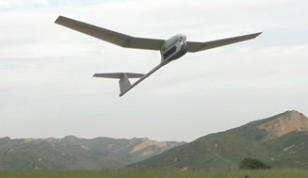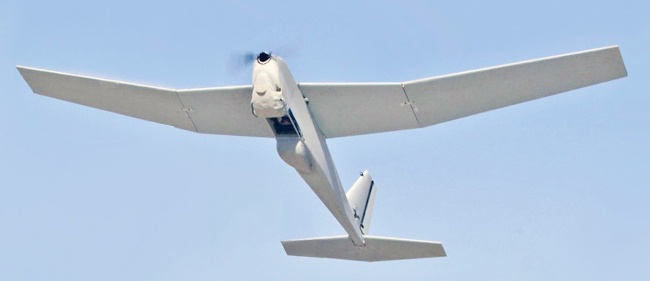AeroVironment RQ-20 Puma AE
The Puma (Pointer Upgraded Mission Ability) UAV, which has been in development since 2001, is a significantly upgraded development of the FQM-151 Pointer using proven technologies from the RQ-11 Raven. The Pointer's single camera is replaced by two EO (Electro-Optical) and IR cameras each, which provides simultaneous forward- and side-looking color and thermal video imagery. Additionally, the maximum endurance of the UAV has more than doubled. Puma uses the same ground control and monitoring equipment as other AeroVironment UAVs, e.g. FQM-151 Pointer, RQ-11 Raven, RQ-14 Swift and RQ-12 Wasp. The Puma is launched and recovered in the same way as the Pointer (hand-launch and fully automatic deep-stall near-vertical recovery), and flies its missions typically at altitudes of 100-300 m (300-1000 ft) above ground and at speeds of about 25-50 km/h (15-31 mph).
 |  | |
| Photos: AeroVironment Inc. | ||
| Puma | ||
The Aqua Puma version was adapted for use in salt water environments, and could be landed directly onto the sea surface and recovered using any small watercraft. It was about 1 kg (2 lb) heavier than the baseline Puma, and had about 30 minutes less duration. A group within the U.S. Navy was flying Aqua Pumas operationally.
The capabilities of the baseline vehicle and the Aqua Puma were eventually combined in the Puma AE (All Environment). This version was first ordered by the U.S. Special Operations Command, the U.S. Army and the U.S. Marines in 2012, and designated RQ-20A. Compared to the original Puma, the RQ-20A has a completely new fuselage and tail assembly, and houses a gimballed combined EO/IR camera system.
 |
| Photo: USMC |
| RQ-20A |
The RQ-20B Puma AE Block 2 is an improved version with a more powerful and lighter propulsion system, a lighter and stronger airframe, a long endurance battery, an improved user interface, and the new Mantis i45 gimbal sensor suite. It was first evaluated by the U.S. Navy in 2016, and later ordered in quantity of the Army and Marines. As of the 2023, the Army is still ordering RQ-20B systems, the latest being of the further improved Puma 3 AE variant.
Specifications
Note: Data given by several sources show slight variations. Figures given below may therefore be inaccurate!
Data for Puma and RQ-20A:
| Puma | RQ-20A | |
|---|---|---|
| Length | 1.8 m (5.9 ft) | 1.4 m (4.6 ft) |
| Wingspan | 2.6 m (8.5 ft) | 2.8 m (9.2 ft) |
| Weight | 4.5 kg (9.9 lb) | 6.3 kg (14 lb) |
| Speed | max: 100 km/h (60 mph) | 47-83 km/h (29-52 mph) |
| Ceiling | 3800 m (12500 ft) | ? |
| Range | 15 km (9 miles) | |
| Endurance | Primary battery: 4 hrs Rechargeable battery: 3 hrs | 3+ hrs |
| Propulsion | Electric motor; 600 W | Protonex ProCore fuel cell driven motor |
Main Sources
[1] AeroVironment Website
[2] Aviation Week & Space Technology "Aerospace SourceBook 2006"
[3] Wikipedia: AeroVironment RQ-20 Puma
Back to Directory of U.S. Military Rockets and Missiles, Appendix 2
Last Updated: 20 January 2024